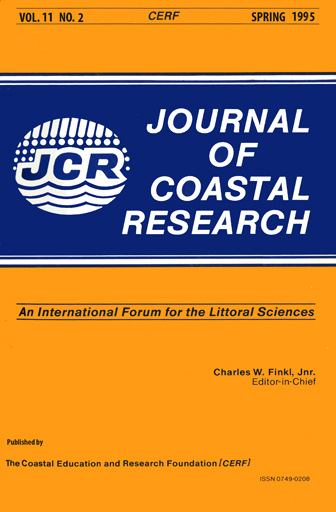Controls on Long-term Saltmarsh Accretion and Erosion in the Wash, Eastern England
Keywords:
The Wash, England, saltmarsh, accretion, reclamation, seabanksAbstract
The Wash is a macrotidal embayment in eastern England which forms part of a once much larger tidal basin which is now largely infilled by silts and peats of Holocene age. Sediment transport within the Wash is dominated by tidal processes, although waves are significant in shaping the detailed morphology along its margins. Much of the coastline has experienced significant accretion of intertidal flats and saltmarshes since Roman times, mainly induced by natural processes but enhanced by human activities which have included drainage diversion, marsh reclamation and construction of training walls. The sediment which has accreted within the intertidal zone during the past two centuries is predominantly sandy and has been derived from below low water mark within the Wash itself. However, most of the mud present on the higher mudflats and saltmarshes is derived from coastal and offshore sources outside the Wash. The rate of coastal accretion appears to have declined progressively since Roman times, possibly in response to a reduction in sediment supply. At present some of the Wash saltmarshes are in a state of dynamic equilibrium or are experiencing marginal erosion, but the majority are still accreting vertically and laterally. Since 1950 there has been a major seaward movement of both high and low water mark along the western shore, accompanied by seaward extension of saltmarsh. However, the rate of seaward progradation has slowed down in the last 15 years. Along the southwestern and southern shores, which are most exposed to storm waves from the northeast, there has been relatively little net change in the position of low watermark since 1950. This shore has not been significantly affected by reclamation in the past 40 years, and there has been only limited seaward growth of saltmarsh at the expense of intertidal flats. In recent years the seaward edge of these marshes has suffered erosion. In the more sheltered southeastern corner of the Wash there has been rapid seaward accretion of marshes since 1950, but the position of low water mark has remained fixed or has even moved landwards slightly. Significant land claim occurred after 1950, and although the area of saltmarsh has been maintained there has been a net loss of intertidal flat area. Vertical accretion of the saltmarshes is quite capable of keeping up with the current rate of sea-level rise in the area, estimated to be about 1.5 mm a-1. Recent patterns of accretion and erosion appear to be controlled principally by movements in the position of the deep water channels and by variations in storm wave frequency and approach direction.


